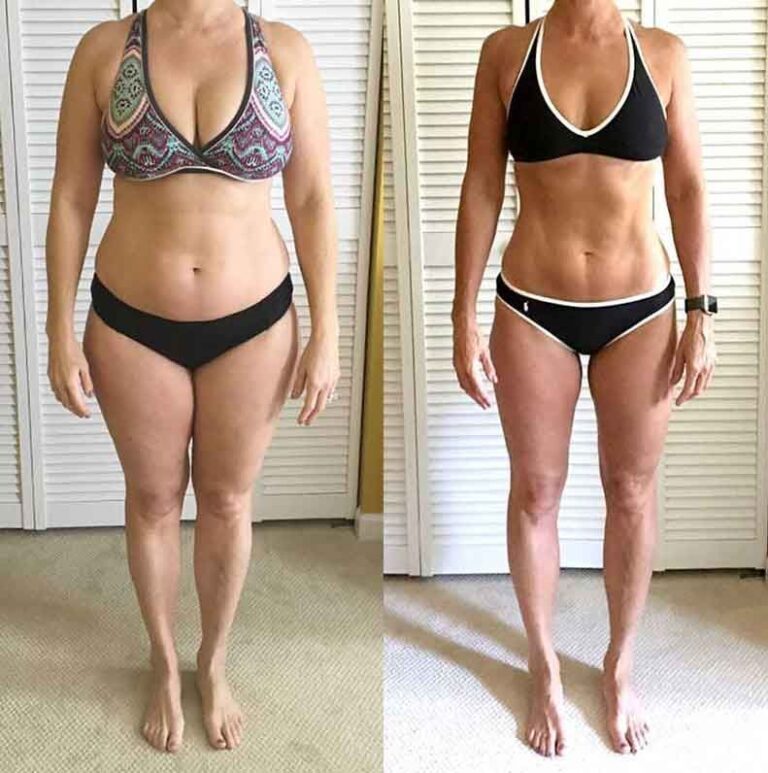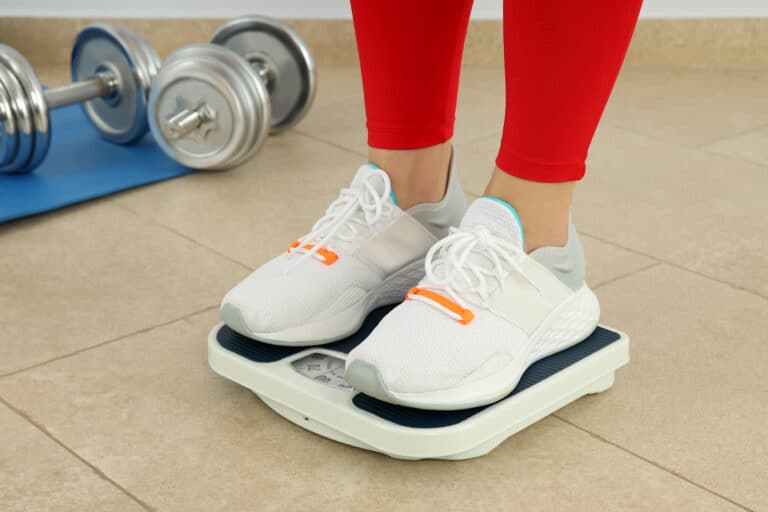Shocking Transformation How to Lose 10 Pounds in 3 Days
Losing weight quickly can be an enticing idea, especially when you have a short-term goal in mind. However, it’s important to approach rapid weight loss with caution, as it may not always be safe or sustainable. In this article, we will explore the possibility of losing 10 pounds in just 3 days, the safety considerations involved, and a balanced diet plan that can help you achieve this goal.
Is It Safe to Lose 10 Pounds in 3 Days?
Embarking on a journey to lose 10 pounds in just three days is undoubtedly an alluring prospect. The idea of shedding weight rapidly can be tempting, especially when there’s a specific event or occasion on the horizon. However, it’s of paramount importance to thoroughly evaluate the safety aspect of such an aggressive weight loss goal.
Losing a substantial amount of weight in such a short timeframe is undeniably challenging, and it may not be suitable for everyone. The first and most crucial step before embarking on any rapid weight loss endeavor is to consult with a healthcare professional. This step is especially critical if you have underlying health conditions or are taking any medications.
Healthcare professionals possess the knowledge and expertise to assess whether a rapid weight loss plan is appropriate for your individual circumstances. They can help you determine if you are at risk of any adverse health effects due to such an aggressive approach. Their guidance can be invaluable in safeguarding your overall health while working toward your weight loss goals.
Moreover, healthcare professionals can provide personalized advice tailored to your specific needs. They can identify potential risks and recommend safer alternatives if necessary. This consultation is an essential first step in ensuring that your weight loss journey is both effective and safe.

Setting Realistic Goals
In any weight loss journey, whether rapid or gradual, the importance of setting realistic goals cannot be overstated. It’s essential to strike a balance between ambition and practicality.
While it’s theoretically possible to shed 10 pounds in three days, it’s vital to understand the nature of this weight loss. A significant portion of the initial weight loss in such a short period is likely to be attributed to the loss of water weight rather than the loss of body fat. This distinction is crucial to grasp.
Water weight can fluctuate rapidly, and it can be relatively easy to shed. However, it’s a temporary form of weight loss that may not contribute significantly to long-term, sustainable results. Fat loss, on the other hand, is a more gradual process that requires consistent effort over time.
Therefore, when setting your weight loss goals, it’s essential to differentiate between short-term, rapid weight loss and long-term, sustainable fat loss. While rapid weight loss can serve as a kickstart to a healthier lifestyle, it’s not a guarantee of lasting results. To achieve and maintain a healthy weight, it’s crucial to transition to a balanced, sustainable diet and exercise routine after any rapid weight loss program.
Day 1: Kickstarting Your Weight Loss Journey
Breakfast Kickstart your weight loss journey with a hearty and nutritious breakfast. Opt for a meal rich in both protein and fiber to keep you satisfied throughout the morning. One excellent choice is a bowl of oatmeal topped with fresh berries and a boiled egg on the side. Oatmeal provides complex carbohydrates and fiber, while the egg adds protein and essential nutrients.
Snack For your mid-morning snack, choose a piece of fresh fruit or a small handful of nuts. These snacks are not only delicious but also packed with vitamins, minerals, and healthy fats to keep your energy levels stable.
Lunch Lunchtime should focus on providing your body with a lean source of protein for sustained energy. Consider grilled chicken or tofu as your primary protein source. Pair it with a generous serving of leafy greens and colorful vegetables. This combination ensures you receive essential nutrients and keeps your calorie intake in check.
Snack In the afternoon, opt for a snack rich in protein to curb hunger pangs and maintain muscle mass. Greek yogurt or cottage cheese is an excellent choice, as it provides a protein boost and helps keep you full until dinner.
Dinner For dinner, keep your meal light yet satisfying. A salad with a source of lean protein, such as grilled chicken or tofu, is a perfect choice. Incorporate a variety of vegetables and a modest serving of dressing to add flavor without excess calories.
Day 2: Sustaining the Momentum
Breakfast Continue your journey with a nutritious breakfast that sustains your momentum. Try a smoothie made with spinach, banana, and a scoop of protein powder. This smoothie is rich in vitamins, minerals, and protein to kickstart your day.
Snack For your mid-morning snack, indulge in some carrot sticks or celery with a side of hummus. These vegetables are low in calories but high in fiber and nutrients, making them an ideal snack for weight loss.
Lunch Opt for a hearty salad for lunch, packed with an array of colorful vegetables and your choice of protein. This combination provides essential vitamins and minerals, along with protein to keep you feeling full and satisfied.
Snack In the afternoon, maintain your energy levels with a small serving of low-fat cheese. The protein in cheese can help stave off hunger and provide essential nutrients.
Dinner End your second day with a nutritious dinner consisting of a grilled fish fillet and steamed broccoli. Fish is a lean source of protein, while broccoli is a nutrient powerhouse. This dinner is both delicious and supportive of your weight loss goals.
Day 3: Final Push
Breakfast On the final day of your weight loss journey, start with a vegetable omelet for a protein-packed breakfast. Include a variety of vegetables for added nutrients and flavor.
Snack For a satisfying and healthy snack, munch on a handful of almonds or walnuts. These nuts are rich in healthy fats and can help keep your energy up throughout the day.
Lunch Lunch could consist of a quinoa and vegetable stir-fry. Quinoa is a protein-rich grain, and when combined with colorful vegetables, it creates a nutritious and filling meal.
Snack In the late afternoon, enjoy a snack of Greek yogurt with honey. Greek yogurt is high in protein and probiotics, promoting both fullness and gut health.
Dinner Conclude your weight loss journey with a simple yet nutritious dinner. Consider roasted chicken breast paired with a medley of mixed vegetables. This combination provides a balance of lean protein and essential nutrients to round out your three-day plan.
By following this balanced diet plan, you can work toward your goal of losing 10 pounds in 3 days while nourishing your body with essential nutrients. Remember to stay hydrated throughout the process and, if necessary, consult with a healthcare professional to ensure that this rapid weight loss approach is safe for you.

Staying Hydrated
One often overlooked but crucial aspect of any successful weight loss plan is staying adequately hydrated. Hydration is not only essential for overall health but also plays a significant role in the effectiveness of your weight loss efforts.
Maintaining proper hydration can provide several benefits that support your weight loss journey:
- Appetite Control: Sometimes, our bodies confuse thirst with hunger. This means that when you’re not adequately hydrated, you might feel hungry when, in reality, your body is just asking for water. By staying hydrated, you can help control unnecessary food cravings and prevent overeating.
- Digestion and Metabolism: Proper hydration is vital for the efficient functioning of your digestive system and metabolism. Water aids in breaking down food, absorbing nutrients, and eliminating waste. A well-hydrated body is more effective at processing calories and fat.
- Energy Levels: Dehydration can lead to fatigue and reduced energy levels. When you’re feeling tired, you’re less likely to engage in physical activity or stick to your diet plan. Staying hydrated helps maintain your energy, allowing you to remain active and motivated.
- Temperature Regulation: During exercise, your body temperature rises. Adequate hydration helps regulate body temperature, preventing overheating during physical activity.
To ensure you stay hydrated, aim to drink plenty of water throughout the day. While individual water needs vary, a general guideline is to consume at least eight 8-ounce glasses of water daily. However, if you’re engaged in strenuous physical activity or experiencing hot weather, you may need more.
Additionally, consider incorporating hydrating foods into your diet, such as water-rich fruits and vegetables like watermelon, cucumber, and oranges. These foods can contribute to your overall hydration while providing essential nutrients.
Incorporating Exercise
While diet plays a significant role in weight loss, the combination of a balanced diet and regular exercise can yield even better results. Exercise helps you burn calories, build lean muscle, and improve your overall fitness level. Here are some considerations for incorporating exercise into your weight loss plan:
- Cardiovascular Exercise: Cardio workouts are effective for burning calories and improving your cardiovascular health. Activities like walking, jogging, cycling, and swimming are excellent choices. Aim for at least 150 minutes of moderate-intensity cardio exercise per week, as recommended by health experts.
- Strength Training: In addition to cardio, incorporating strength training exercises can help build muscle mass. Muscle burns more calories at rest than fat, so increasing your muscle mass can boost your metabolism. Include resistance exercises using weights or resistance bands in your fitness routine.
- Consistency: Consistency is key to seeing long-term results. Create a workout schedule that fits your lifestyle and stick to it. Gradually increase the intensity and duration of your workouts as your fitness level improves.
- Variety: Mixing up your exercise routine can prevent boredom and plateaus. Try different types of workouts to challenge your body and engage different muscle groups.
- Rest and Recovery: Don’t forget the importance of rest and recovery days. Overexercising can lead to burnout and injury. Ensure you give your body time to recuperate between intense workouts.
- Consult a Professional: If you’re new to exercise or have specific fitness goals, consider consulting a fitness trainer or healthcare professional. They can help you create a personalized exercise plan tailored to your needs and capabilities.
Incorporating exercise into your weight loss plan not only helps you shed pounds but also improves your overall health and well-being. Remember that both diet and exercise work synergistically to achieve your weight loss goals, and a balanced approach is the most effective and sustainable way to reach and maintain your target weight.

Monitoring Your Progress
Keeping a close eye on your weight loss progress is essential to stay on track and make necessary adjustments. Here are some tips for effectively monitoring your progress during your 3-day weight loss journey:
Daily Weigh-Ins: Weighing yourself daily can provide valuable insights into your progress. However, it’s important to understand that weight can fluctuate daily due to factors like water retention and digestive changes. Therefore, don’t be discouraged by minor fluctuations. Instead, focus on the overall trend over the 3-day period.
Consistent Timing: To get accurate readings, weigh yourself at the same time each day, preferably in the morning after you wake up and after visiting the restroom. This consistency helps eliminate variables that can affect your weight measurements.
Record Your Results: Maintain a journal or use a dedicated app to record your daily weight. This documentation allows you to visualize your progress and identify any patterns or trends.
Measurements: Besides tracking your weight, consider measuring other aspects of your body, such as waist circumference or body fat percentage. These measurements can provide a more comprehensive view of your progress.
Celebrate Small Wins: Acknowledge and celebrate small victories along the way. Even if your daily weight doesn’t show significant changes, recognizing improvements in energy levels or how your clothes fit can be motivating.
Listening to Your Body
Your body communicates its needs, and it’s crucial to listen attentively during a rapid weight loss journey. Here are some key points to keep in mind:
Extreme Hunger: While you may expect some degree of hunger during a weight loss plan, extreme or persistent hunger can signal that your calorie intake is too low. In such cases, it’s essential to adjust your diet to ensure you’re getting adequate nutrition and energy.
Fatigue: Feeling excessively tired or fatigued can indicate that your body isn’t receiving enough nutrients or calories to support its functions. Consider reevaluating your diet plan and consulting a healthcare professional if needed.
Dizziness: Experiencing dizziness or lightheadedness can be a sign of low blood sugar or dehydration. Ensure you’re drinking enough water and consuming balanced meals to prevent such issues.
Listen to Cravings: Pay attention to your body’s cravings, as they can provide insights into your nutritional needs. If you consistently crave certain foods, it may indicate a deficiency in specific nutrients. Seek healthier alternatives to address these cravings.

Potential Risks
While rapid weight loss can lead to quick results, it’s important to be aware of potential risks associated with this approach:
Muscle Loss: Rapid weight loss may lead to muscle loss, which can be detrimental to your metabolism and overall strength. To minimize muscle loss, incorporate strength training exercises into your routine and ensure you consume enough protein.
Nutritional Deficiencies: Severely restricting your calorie intake can result in nutritional deficiencies. It’s essential to include a variety of nutrient-dense foods in your diet plan and, if necessary, consider taking supplements under the guidance of a healthcare professional.
Slowed Metabolism: Extreme calorie restriction can lead to a slowed metabolism, making it easier to regain weight once you return to regular eating habits. Gradual and sustainable weight loss is less likely to have this effect.
Gallstones: Rapid weight loss can increase the risk of gallstones. If you have a history of gallbladder issues, consult a healthcare professional before attempting a rapid weight loss plan.
In summary, monitoring your progress, listening to your body, and being aware of potential risks are crucial aspects of any weight loss journey, especially when attempting rapid weight loss. Prioritize your health, and if you encounter severe or persistent issues, seek professional guidance to ensure your safety and well-being throughout the process. Rapid weight loss should be viewed as a short-term solution and not a long-term sustainable approach to weight management.

Start Your Weight Loss Journey Today
Losing 10 pounds in 3 days is an ambitious goal that may not be suitable for everyone. Before attempting such a rapid weight loss plan, consult with a healthcare professional to ensure it’s safe for you. Remember that sustainable and healthy weight loss is a gradual process that involves making long-term lifestyle changes.
FAQs
1. Is it possible to lose 10 pounds in 3 days without any risks?
- While it is possible, it may not be safe or sustainable for everyone. Consult a healthcare professional before attempting such rapid weight loss.
2. Can I replace meals with shakes or supplements for this rapid weight loss plan?
- It’s not recommended to replace meals entirely with shakes or supplements. A balanced diet is essential for overall health.
3. How can I maintain my weight loss after completing this 3-day plan?
- Transition to a balanced and sustainable diet and exercise routine to maintain your weight loss over time.
4. What are the common mistakes people make when attempting rapid weight loss?
- Common mistakes include extreme calorie restriction, neglecting essential nutrients, and not consulting a healthcare professional.
5. Are there any specific foods I should avoid during this 3-day weight loss plan?
- Avoid processed and high-sugar foods. Focus on whole, nutrient-dense foods for best results.
What To Do Next…
For people who want to stop struggling with their weight

We Now Have FDA Approved Semaglutide Weight Loss in Sarasota and Bradenton Florida. Book a free consultation and find out about the semaglutide cost and semaglutide side effects. Semaglutide injection are available after your free consultation.






